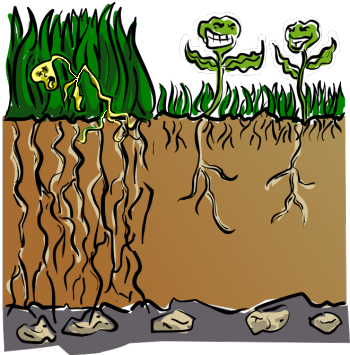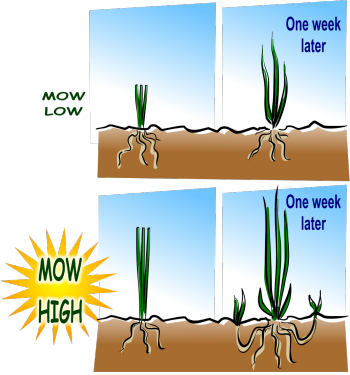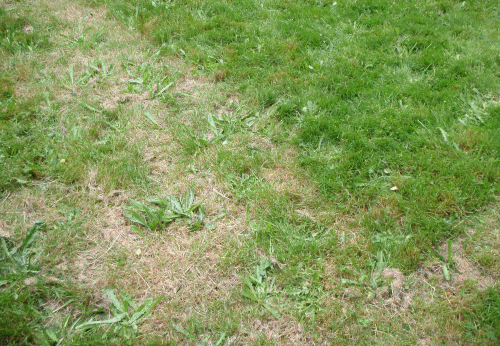From the article ... weeds tend to be happy with mowing low:

And grass tends to be happy with mowing high:

For people with acres of pasture, I think mowing at 6 inches might be best (depending on grass species).
For people with urban lawns, I think mowing to 3 inches is usually good enough, but for some cases, mowing to four inches is even better.
I agree with Diane that you would usually cut when your lawn is about an inch taller than you mow. Of course, it's a difficult thing to measure since a few blades of grass will get to be an inch taller in a few days and other blades might take months. But the key is that when you mow high, you don't get the clumping globs of grass nearly as often. And if you do get clumping globs of grass that will smother other grass, then you did wait to long between mowings.
If you mow low, you might have to mow every week, or even more often. If you mow high, you often mow about half as often.
I wish to express a school of thought that is different from Diane: I suggest that folks not do overseeding, but, rather, build their soil so that the turf will become thicker rhizomadously (a grass plant will shoot out a rhizome which creates a new grass plant).
And as for aerating: I worry about turf that benefits from aeration. I think it is a sign of a deeper problem. Further, I think that some lawns have such a thin soil, that aeration might actually make things worse. Consider this: if your lawn is loaded to the gills with happy earthworms, then wouldn't that suggest that you don't need aeration?































 1
1


























